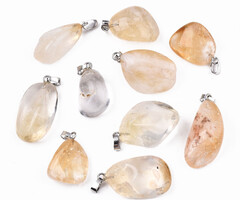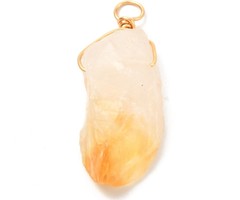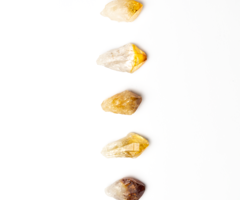Citrine Gemstone Beads
Citrine
Citrine is named after the yellow lemon. This cheerful stone is said to help stimulate creativity and attract happiness.
Healing properties and meaning of citrine
Citrine is said to be good for positive feelings! The sunny citrine seems to be able to cheer you up. Additionally, it is said to help with creativity and decision making. It is thought to help with studying. In addition, citrine is associated with money, and is thought to help attract wealth, happiness and success.
How to use citrine
In addition to our charms, connectors and beads you can make beautiful jewelry with, there are other uses for citrine. You can always carry the stone in your pocket. It is thought that you can then 'use' the beautiful properties of citrine at any time.
How to care for my citrine
citrine can be cared for in a variety of ways. For example, you can cleanse it in water and charge it in moonlight. Please note: too much sunlight can change the color.
Where does citrine come from?
Citrine is mined in Brazil, Madagascar, the United States, Argentina and Spain, among other places.
History
Citrine used to be seen as a gift from the sun! Not surprising with that beautiful yellow color.
Ancient swords have been found in Scotland that contain citrine. These swords come from around 300-150 BC. Besides making the swords more beautiful, citrine was used as protection during battles.
In ancient Egypt, citrine was also used as protection, but mainly against snake venom and evil thoughts.
Which horoscope fits citrine
Citrine fits the horoscopes Aries, Gemini, Leo and Libra.
Of course any stone can be good for you, try to sense it and see which one(s) you like.
Which chakra fits citrine
Citrine fits the 3rd chakra, the solar plexus.
The color of citrine
Citrine is a type of quartz. The yellow color comes from the presence of iron. Citrine is also formed from other quartz types, mainly from amethyst and smoky quartz. High heat changes the color to yellow (from 390 degrees celcius). The higher the temperature, the hotter the color. At 560 degrees it already turns orange-brown.
Chemical composition: Sio2 (silicone dioxide)
Mohs hardness: 7
Density: 2.65





